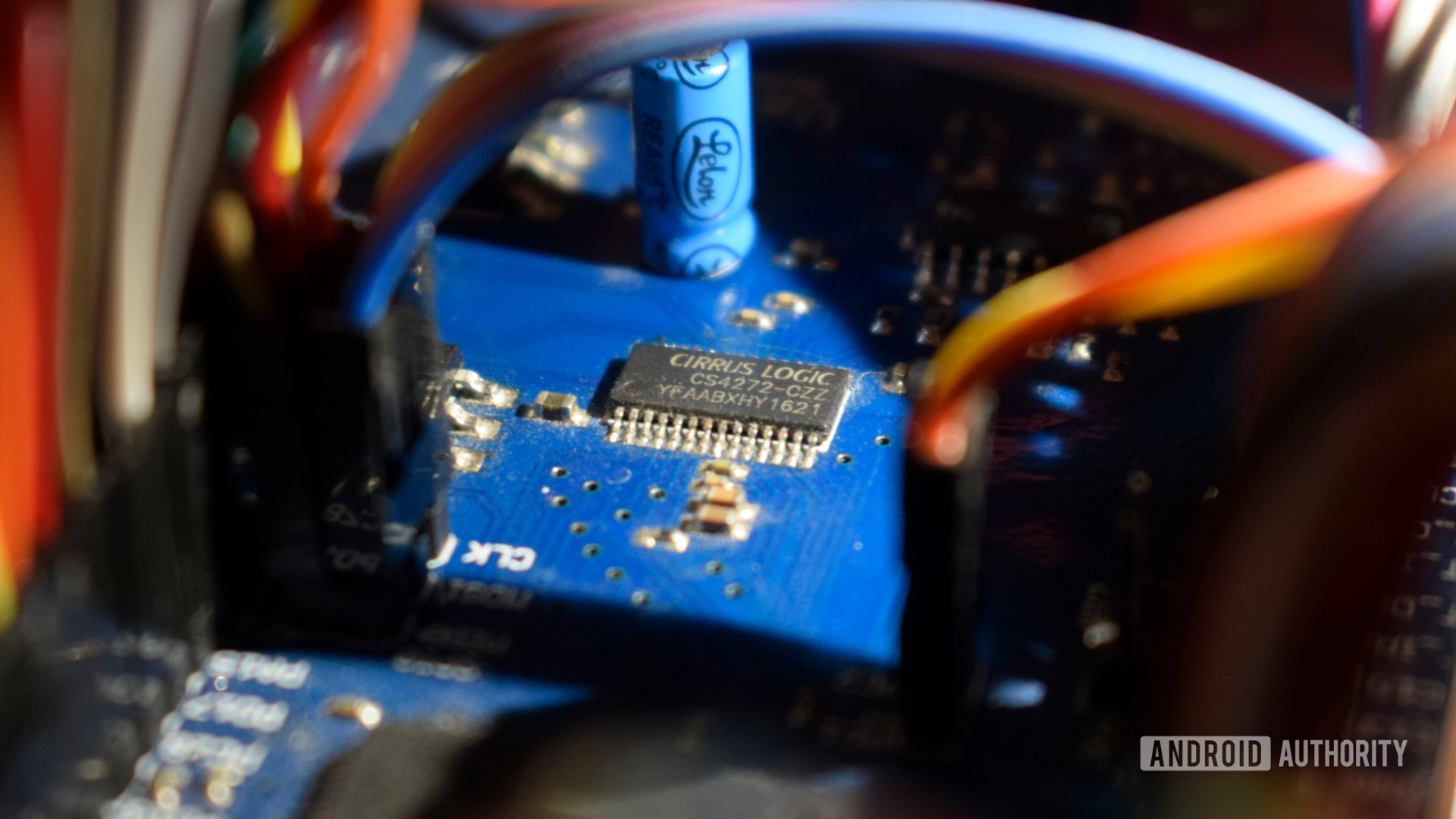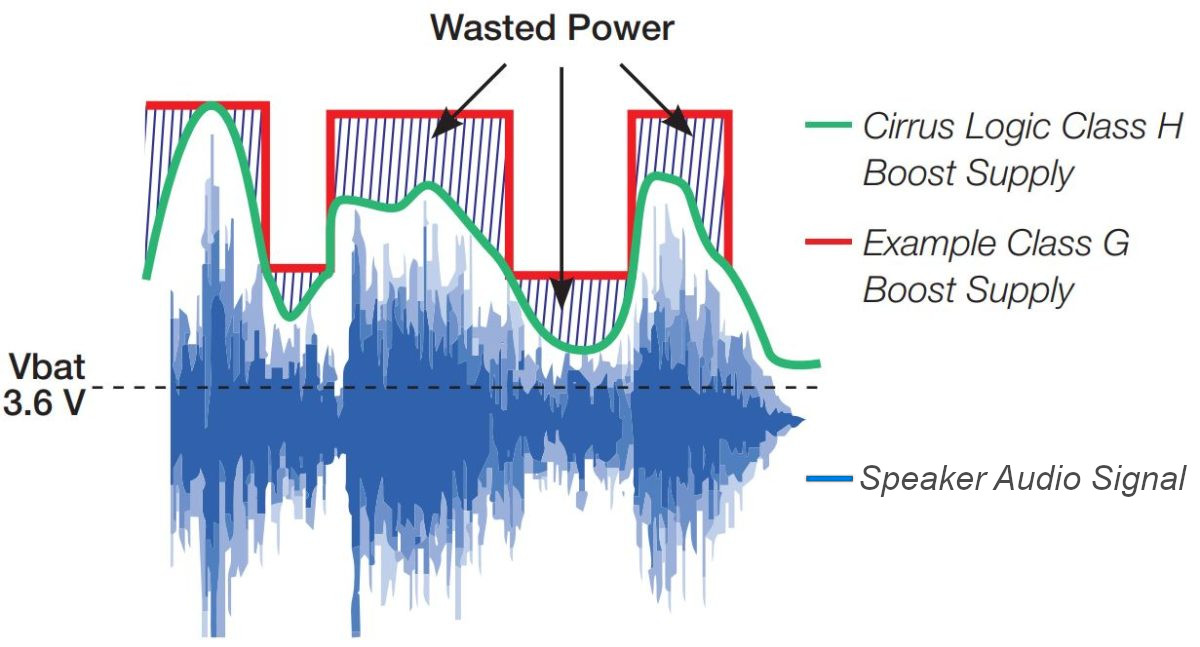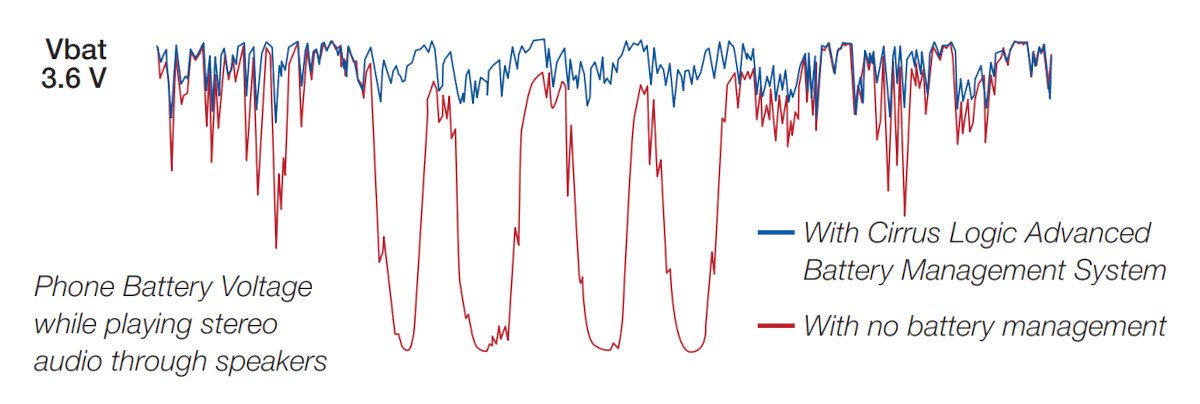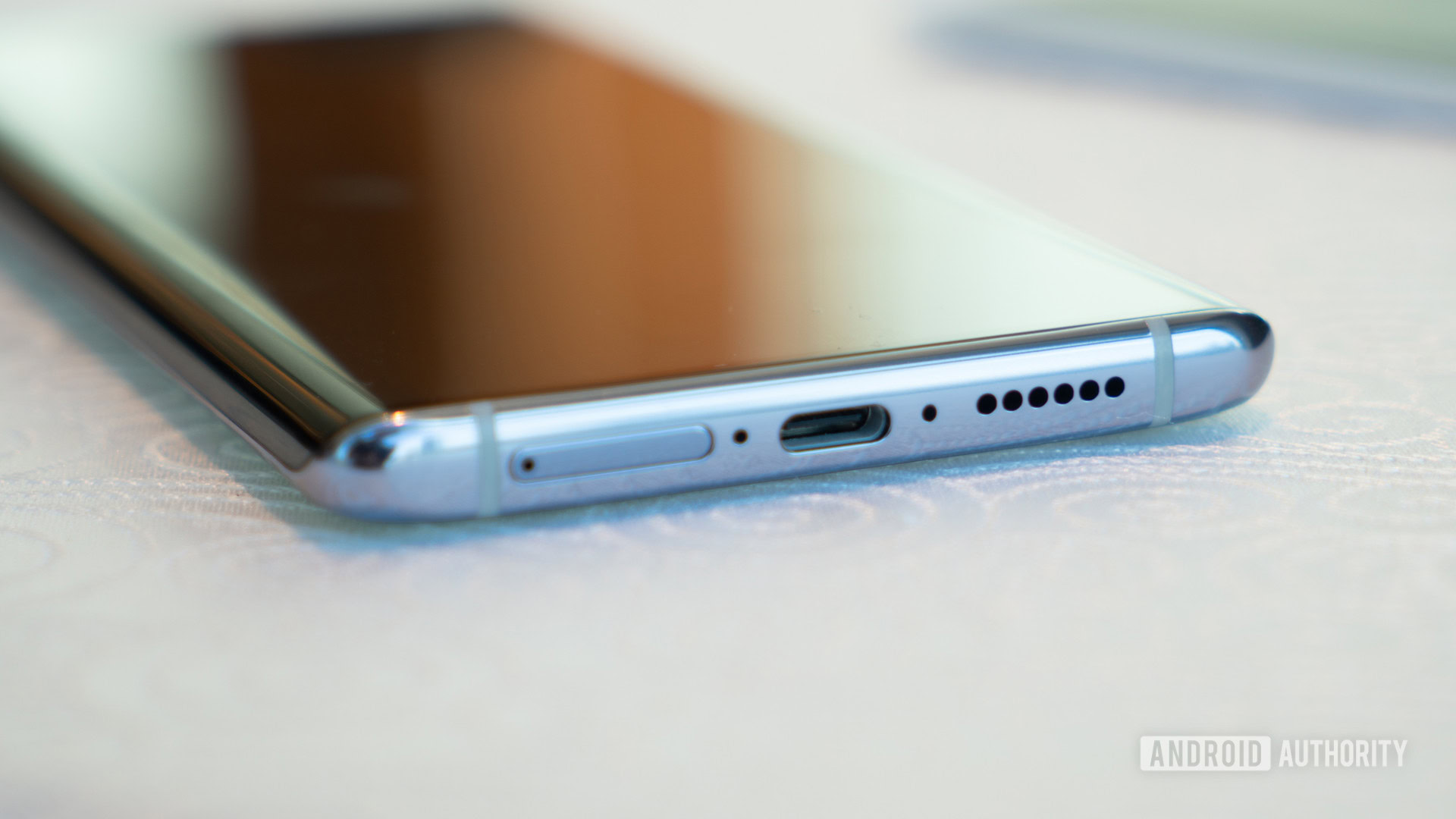Affiliate links on Android Authority may earn us a commission. Learn more.
Big sound from tiny speakers: How Smart Power Amplifiers make it happen
February 16, 2021
Modern smartphones have to keep up with our increasingly demanding audio needs. Whether it’s wireless audio playback, traditional wired headphones, or the increasing consumption of audio over phone speakers, we’re consuming greater amounts of music, movies, and games than ever before. Building a smartphone capable of delivering exceptional quality audio, particularly over tiny mobile speakers, is no small task.
Better quality hardware is part of the solution and there are equally important developments in digital signal processing software algorithms. These days you’ll increasingly find these capabilities tucked inside the amplifier chip that drives the phone speaker.
What to look for in great smartphone audio playback?
Producing great sounding audio playback is a multi-faceted problem. On the one side, there’s the demand for increased and consistent loudness across multiple speakers and at all frequency ranges. After all, we don’t want explosions to overwhelm speech when cranking up the volume on our favorite action movies. Volume with a wide dynamic range, clean, punchy, high precision bass, and crisp high frequencies is much coveted. Along with a wide sense of spatial presence and tonal balance that enables the listener to pick out subtle details, whether they’re listening at quiet or loud volumes.
There are many different types and causes of speaker distortion. One weak link in the chain can ruin your listening experience.
At the same time, phone speakers need to be driven with very low distortion for a clean presentation at both low and high listening levels. Distortion comes in a variety of forms. The most obvious is the buzz and fuzz you might hear when pushing a poor quality speaker or power supply into clipping at loud volumes. But distortion could also come from other sources – circuit and power supply noise that might be multiplied by a speaker amplifier or non-linearity in either the speaker or the amplifier at low or high volumes. Distortion can also include pumping sounds produced by an inadequate power supply or other unwanted additional compression effects.
A high-quality audio setup needs to take all of these technical points into consideration, as just one weak link in the chain can ruin your listening experience. Particularly when dealing with tiny speakers and lower audio power budgets found in smartphones.
How do “smart” boosted amplifiers handle the audio technicalities and provide high-quality playback?

The prevalence of mobile audio as people’s primary point of listening has given rise to a whole host of new problems to solve. Tiny micro speakers and the limited power from lithium-ion batteries require innovative new approaches compared to the mains-powered amplifiers and large speakers found in the Hi-Fi ecosystem. To close the quality gap, manufacturers have turned to “smart” amplifier chips.
Typically, the benefits of improved audio quality and bleeding-edge technologies are thought about in terms of listening to music, playing games, and watching films. However, smart amplifier technologies are equally important for voice calls as well, a particularly important use case in smartphones. You certainly don’t want to fight and strain against the background noise to hear an incoming call, so high-quality amplifiers need to offer a very low noise floor for quiet calls.
Read more: Smartphone audio is important, here’s what it takes to build the best
This is quite a tall order from an amplifier that also drives high power signals and pumps out our music. An amplifier with a high signal-to-noise ratio (SNR) is desirable for all use cases, as it ensures the noise floor won’t interfere with the audio we want to hear. But SNR is particularly important in situations with smaller signal levels, such as voice, where subtle differences in timbres and tones that make speech sound unique and intelligible can be masked by high levels of noise. A quality amplifier can be the difference between crystal clear calls and repeating “sorry, can you say that again?”.
When it comes to smartphones, a high-quality amplifier has to cater to the rather different demands of both multimedia and voice. The smart technologies found in these amplifiers can be split into two categories; intelligent power management and the use of digital signal processing for audio enhancements.
Intelligent power management
Smartphone speakers are limited by the power of the phone battery, particularly when the cells are running low on juice. The first stage to improving mobile audio quality is to improve power efficiency to make the most of these batteries. Boosted power systems waste less power through the use of efficient Class D amplifiers, rather than traditional Class A and AB designs.
At the same time, these amplifiers are able to produce high peak power outputs by scaling their power supply rails up and down to follow peaks in the audio (Class H function). This wastes less power when playing back at low volumes while still catering to the demands of higher volumes. For example, smart amplifiers from Cirrus Logic offer a boosted output of up to 7.1 watts for maximum loudness.

Accurately measuring battery voltage, current, and resistance in real-time allows a smart amplifier to work out the optimum output power level depending on the current battery condition. This ensures that speakers sound just as good at high and low battery levels, and don’t end up distorting and ruining audio quality as the battery runs low on juice.

In the second example above, Cirrus Logic’s solution ensures a more consistent voltage across the battery when driving audio through speakers. Battery droop means less power for the speaker, which can, in turn, increase the likelihood of distortion and a lack of power for loud listening volumes. Not to mention the knock-on effect for other components powered from the battery, such as a processor and wireless communication technologies. Intelligent battery management may not seem like an obvious starting place for smart audio technologies, but it’s an incredibly important one.
Smarter digital signal processing
Having the capability to deliver high output power in an efficient manner is just one piece of the puzzle. There is a wide range of digital signal processing (DSP) that needs to be applied to not just the power environment, but also the audio signal to improve performance in small smartphone audio systems.
Greater power requires a keener eye for safety and speaker protection. A key challenge is to drive high power into the speakers while operating within safe limits. Traditional analog speaker protection circuits are relatively crude, often relying on fuses. Modern smart amplifiers built for mobile devices are much more intelligent, using real-time speaker monitoring and algorithms to make the most of the available power without exceeding speaker safe operational limits.
A key operating criterion is speaker excursion. Excursion defines how far the speaker cone can move from its resting position, with smaller speakers having a smaller excursion limit. Higher excursion moves more air to produce louder sound and higher bass. Exceeding a speaker’s excursion limit is a recipe for clipping distortion and even permanent damage, particularly when it comes to the micro speakers used in smartphones. Heat can also become an issue when moving speakers back and forth, and overheating is especially unacceptable in hand-held consumer electronics.
Real-time information about speaker excursion and temperature allows the smart amplifier to implement a control algorithm designed to push the speaker to its limits without exceeding them. This maximizes performance while ensuring that speakers operate safely at all times.
Tuning experts and the human ear
The intelligent applications of DSP techniques aren’t restricted to speaker monitoring, they can also be used to improve sound and even “trick” our ears into hearing better quality audio through the use of psychoacoustic techniques. Manipulating the Missing Fundamental phenomenon, for example, convinces our brains into hearing more bass from small mobile speakers that otherwise struggle to produce very low frequencies. Compression, used sparingly, can also help to increase the perceived loudness of audio sources, at the expense of some dynamic range.
A tool is only as good as the person who wields it. Expert speaker tuning knowledge and experience is just as important as a powerful algorithm.
Expert speaker and algorithm tuning is another fundamental part of a smart amplifier setup.
Speaker tuning is an increasingly common technique used to iron out imperfect speaker frequency responses, such as correcting for booming bass or padding out a dip where top and bottom speaker frequencies cross over. Speaker tuning is also used to give a speaker a signature sound that may be associated with a specific brand. This seems simple in theory, but layering up filters to manipulate sound is a complex process and it isn’t necessarily easy to predict the final result. Done badly, speaking tuning can introduce unforeseen issues of its own, such as phase, impulse response, and filter ringing artifacts.
In addition, speaker/sound tuning involves customizing the speaker and battery protection algorithms to cater to the specific system. A tool is only as good as the person who wields it, which is where expert knowledge and experience proves invaluable. A deep understanding of electrical and acoustic systems, along with a well-trained ear, is essential to detect artifacts and correct for the optimum frequency response. For this reason, Cirrus Logic maintains a team of tuning experts who can choose the most effective signal processing schemes and tune them to deliver maximum performance.
Building better mobile audio

The demanding audio needs of modern smartphones are driving new requirements from speaker and amplifier components. They are required to be increasingly capable of driving top-notch quality audio at both quiet and loud listening levels, even when battery capacity is running low. You’ll find that many phones powered by smart boosted amplifiers deliver these capabilities and features.
Cirrus Logic is an industry leader in boosted amplifier technology with unit sales now exceeding 3 billion. These amplifiers are providing exceptional audio in eight of the top 12 rated smartphones, through the use of speaker tuning, intelligent power management, and other techniques outlined above.
In conclusion, the audio industry is increasingly turning to powerful digital modeling techniques and more intelligent amplifiers to improve audio quality across various form factors. These technologies are particularly potent in mobile applications, where battery limitations and small speakers require extra attention in order to achieve superior sound quality.
Thank you for being part of our community. Read our Comment Policy before posting.